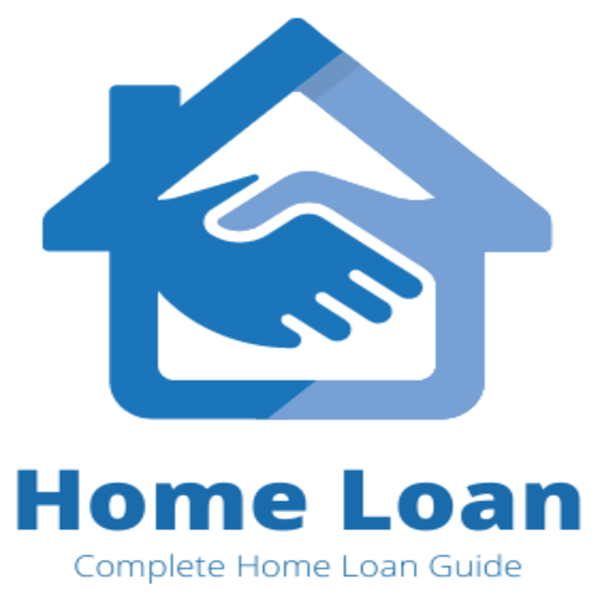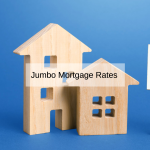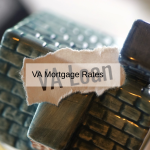In the complex world of real estate financing, securing a mortgage loan is often one of the most significant financial decisions individuals make. As borrowers navigate through the intricate process of obtaining a mortgage, they encounter various terms and concepts, among which the "rate lock" stands out as a crucial tool for managing interest rate risk. In this comprehensive guide, we delve into the intricacies of mortgage rate locks, elucidating their importance, mechanics, benefits, and potential pitfalls. By understanding the dynamics of rate locks, borrowers can empower themselves to make informed decisions and safeguard their financial interests amidst the ever-changing landscape of interest rates and market fluctuations.
Understanding Mortgage Rate Locks:
At its core, a mortgage rates va loan lock is a contractual agreement between a borrower and a lender, designed to freeze the prevailing interest rate for a specified period. In essence, it offers borrowers protection against fluctuations in interest rates during the loan processing period, thereby ensuring predictability and stability in their mortgage payments. Typically, rate locks are available for varying durations, ranging from 15 days to 90 days or even longer, depending on the lender's policies and market conditions.
Importance of Mortgage Rate Locks:
The importance of mortgage rate locks cannot be overstated, especially in volatile economic environments where interest rates are prone to rapid fluctuations. By securing a favorable rate through a rate lock, borrowers shield themselves from the adverse effects of rising interest rates, thereby preserving their purchasing power and enhancing affordability. Moreover, rate locks provide borrowers with peace of mind and certainty, enabling them to plan their finances with confidence and avoid unpleasant surprises down the line.
Mechanics of Mortgage Rate Locks:
The process of securing a mortgage loan calculator rate lock entails several key steps and considerations. Firstly, borrowers must carefully assess their financial situation and determine the optimal timing for locking in a rate. Factors such as prevailing market conditions, economic indicators, and personal financial goals should all be taken into account during this evaluation process. Once a decision to proceed with a rate lock is made, borrowers must communicate their intentions to the lender and initiate the formal rate lock request.

Upon receiving the rate lock request, the lender will typically quote a specific interest rate and duration for the lock period. It is imperative for borrowers to review the terms and conditions of the rate lock agreement thoroughly, paying close attention to any potential fees, expiration dates, and provisions for rate adjustments. Once both parties reach a consensus on the terms of the rate lock, the agreement is formalized, and the specified interest rate is locked in for the predetermined duration.
Benefits of Mortgage Rate Locks:
The benefits of mortgage rate locks extend beyond mere protection against interest rate fluctuations. One of the primary advantages is the ability to secure a favorable rate in a rising rate environment, thereby saving thousands of dollars over the life of the loan. Additionally, rate locks provide borrowers with flexibility and peace of mind, allowing them to focus on other aspects of the home buying process without being unduly concerned about interest rate movements.
Moreover, rate locks can be particularly advantageous for borrowers who are in the process of finalizing a real estate transaction or awaiting approval for their mortgage application. By eliminating the uncertainty surrounding interest rates, rate locks facilitate smoother and more efficient closings, thereby enhancing the overall home buying experience for all parties involved.
Potential Pitfalls of Mortgage Rate Locks:
While mortgage rate locks offer numerous benefits, they are not without their potential pitfalls and drawbacks. One common concern is the possibility of interest rates declining after the rate lock is initiated, thereby causing borrowers to miss out on potential savings. In such scenarios, borrowers may find themselves locked into a higher home loan interest rate than what is currently available in the market, leading to feelings of frustration and regret.
Furthermore, borrowers should be mindful of the expiration dates associated with rate locks, as failing to close the loan within the specified timeframe can result in the expiration of the lock and potentially necessitate renegotiation of the terms with the lender. Additionally, some lenders may impose fees or penalties for extending or modifying rate locks, further complicating the process for borrowers.
Strategies for Maximizing the Benefits of Mortgage Rate Locks:
To mitigate the risks associated with mortgage rate locks and maximize their benefits, borrowers can employ several strategic approaches. Firstly, it is advisable to closely monitor interest rate trends and economic indicators to identify opportune moments for initiating rate locks. By staying informed and proactive, borrowers can capitalize on favorable market conditions and secure the most advantageous rates available.
Furthermore, borrowers should maintain open lines of communication with their lenders throughout the rate lock process, seeking clarification on any ambiguous terms or potential pitfalls. Additionally, it is prudent to explore alternative financing options, such as adjustable-rate mortgages or hybrid loans, which offer greater flexibility and customization compared to traditional fixed-rate mortgages.
In mortgage rate locks serve as invaluable tools for borrowers seeking to mitigate the risks associated with interest rate fluctuations and secure favorable financing terms for their real estate transactions. By understanding the mechanics, benefits, and potential pitfalls of rate locks, borrowers can make informed decisions and navigate the intricacies of the mortgage lending process with confidence and clarity. As the real estate market continues to evolve and adapt to changing economic conditions, mortgage rate locks remain essential safeguards for protecting borrowers' financial interests and ensuring stability in an uncertain world.
Through prudent planning, strategic decision-making, and effective communication with lenders, borrowers can leverage the power of home loan interest rates locks to achieve their homeownership goals and embark on the path to long-term financial security and prosperity. In essence, mortgage rate locks represent not only a contractual agreement between borrowers and lenders but also a symbol of trust, transparency, and mutual benefit in the dynamic realm of real estate finance.
Frequently Asked Questions (FAQ) about Mortgage Rate Locks:
1. What is a mortgage rate lock, and why is it important?
A mortgage rate lock is a contractual agreement between a borrower and a lender that freezes the prevailing interest rate for a specified period, typically during the loan processing phase. It is important because it protects borrowers from fluctuations in interest rates, providing predictability and stability in mortgage payments.
2. How does a mortgage rate lock work?
When a borrower initiates a rate lock, the lender quotes a specific interest rate and duration for the lock period. Once both parties agree on the terms, the interest rate is locked in for the predetermined duration, shielding the borrower from any subsequent rate changes during that time.
3. What are the benefits of a mortgage rate lock?
Mortgage rate locks offer several benefits, including protection against rising interest rates, savings over the life of the loan, flexibility in real estate transactions, and peace of mind for borrowers. They also facilitate smoother closings and enhance the overall first time home buyer loans experience.
4. What are the potential pitfalls of mortgage rate locks?
One common concern is the possibility of interest rates declining after the rate lock is initiated, causing borrowers to miss out on potential savings. Additionally, borrowers should be mindful of expiration dates associated with rate locks and potential fees or penalties for extending or modifying locks.
5. How can borrowers maximize the benefits of mortgage rate locks?
Borrowers can employ strategic approaches such as monitoring interest rate trends, maintaining open communication with lenders, exploring alternative financing options, and staying informed and proactive throughout the rate lock process to maximize the benefits of mortgage rate locks.
6. Can mortgage rate locks be renegotiated or extended?
Some lenders may allow for rate lock extensions or modifications, but borrowers should be aware of potential fees or penalties associated with these changes. It is essential to communicate with the lender and review the terms of the rate lock agreement carefully before requesting any modifications.
7. What happens if the mortgage does not close within the rate lock period?
If the mortgage does not close within the specified rate lock period, the lock may expire, and borrowers may need to renegotiate the terms with the lender. This can result in uncertainty and potential changes to the originally agreed-upon interest rate and terms.
8. Are mortgage rate locks suitable for all borrowers?
While mortgage rate locks offer valuable protection and stability, they may not be suitable for all borrowers, especially those who anticipate significant changes in their financial situation or housing plans. It is essential for borrowers to carefully evaluate their individual circumstances and consult with a financial advisor or mortgage loan lenders professional before proceeding with a rate lock.















